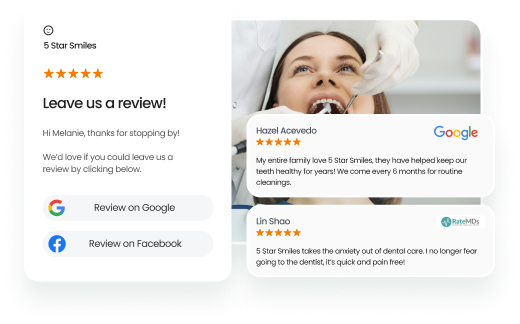“Would you risk losing 62% of your customers over one bad interaction? Without customer experience optimization in place, many businesses already have it, often without realizing it.”
Today’s consumers are more informed and connected than ever before. A single negative experience is all it takes for them to choose a competitor..
According to a study by Birdeye, 62% of customers leave after just one bad interaction, and 67% share that poor experience with friends or family, amplifying the damage. That’s why customer experience optimization is no longer optional; it’s essential for retaining customers and staying competitive.
On the flip side, a positive experience can lead to repeat business and positive word of mouth. The same study found that 54% of customers leave a review after a good interaction, shaping how others view your company before they ever interact with you.
This blog explains what customer experience optimization (CXO) means, why it’s important, and how to use practical methods to improve every interaction and build stronger customer relationships.
Table of contents
- What is customer experience optimization?
- Why is customer experience optimization important for long-term growth?
- Common pitfalls to avoid in customer experience optimization
- How to optimize customer journey across every stage
- How Birdeye helped American Pacific Mortgage improve customer experience at scale
- How to measure customer experience optimization success?
- Final thoughts: Long-term growth starts with customer experience
- Frequently asked questions on customer experience optimization
- How Birdeye enhances customer experience optimization for business growth
What is customer experience optimization?
Customer experience optimization (CXO) is the strategic process of enhancing every interaction a customer has with your brand, across all touchpoints and channels. From the first click to post-purchase support, the goal is to deliver personalized, consistent, and satisfying experiences that meet or exceed expectations.
Unlike traditional customer service, which is often reactive and focuses on support, CXO strategies take a proactive, data-driven, and holistic approach to enhancing the entire customer journey. It involves analyzing customer journeys, identifying friction points, and continuously refining the experience to increase satisfaction, loyalty, and lifetime value.
Why is customer experience optimization important for long-term growth?
Customer experience optimization plays a crucial role in retaining customers and fostering trust over time. Today, experiences often matter more than price or product alone.
According to PwC, 73% of consumers say a good experience influences their loyalty and purchasing decisions, and 42% would be willing to pay more for a friendly and welcoming interaction. By improving CX, businesses can increase repeat sales, reduce churn, and strengthen overall performance. Here’s how:
1. Increased satisfaction and loyalty
When customers have smooth, seamless experiences, they feel valued. This deepens loyalty, encourages repeat business, and strengthens long-term relationships.
2. Lower customer churn
By proactively addressing issues, businesses can prevent the risk of customers switching to competitors. It shows customers that their concerns are heard and valued, increasing long-term loyalty.
3. Higher customer lifetime value (CLV)
Satisfied customers are more likely to make repeat purchases, use services longer, and respond positively to future offers, all of which boost conversion rates and revenue per customer.
4. Greater brand advocacy
Customers who consistently have positive experiences are more likely to leave glowing reviews and recommend your business to others. This kind of social proof is powerful and cost-effective.
5. Increased revenue with reduced acquisition costs
Retaining customers and earning more referrals lowers the cost of acquiring new ones. This results in a more efficient sales funnel and a higher ROI over time.
Customer experience optimization supports long-term success by helping businesses build trust, improve satisfaction, and reduce avoidable losses. When applied across digital channels and teams, even small improvements can lead to stronger outcomes. Leveraging a customer experience software platform makes these optimization efforts more scalable and data-driven.
Common pitfalls to avoid in customer experience optimization
Customer experience optimization requires ongoing effort, cross-functional alignment, and attention to detail. As a result, many enterprises face setbacks because they underestimate the complexity involved or overlook critical areas of execution.
Here are five key pitfalls that often limit the success of customer experience initiatives.
1. Ignoring customer feedback
Collecting feedback but failing to act on it results in missed insights and lost opportunities for improvement.
2. Treating all customers the same
A one-size-fits-all approach feels impersonal. Without personalization, engagement drops and loyalty suffers.
3. Responding slowly or inconsistently
Delayed or inconsistent responses frustrate customers and damage trust, especially during moments that matter.
4. Focusing on individual touchpoints instead of the full journey
Optimizing isolated interactions without journey context creates experience gaps.
5. Using outdated tools or providing limited training
Legacy systems and untrained staff increase errors, delay issue resolution, and cause customer dissatisfaction.
6. Neglecting cross-functional collaboration
When departments work in silos, it creates fragmented experiences and slow issue resolution.
Avoiding these five pitfalls helps businesses create experiences that are more consistent and exceed customer expectations.
How to optimize customer journey across every stage
Improving overall customer experience starts with understanding what matters to your customers and continues with practical steps that remove friction, support better service, and keep interactions clear and consistent.
Below are the essential strategies that help teams improve customer experience in meaningful and measurable ways.
1. Understand customer expectations & pain points early
Before making changes, you need to know what matters most to customers. Analyze behavioral data, demographics, and feedback to spot trends in what people value or struggle with. This research lays the groundwork for effective CXO strategies.
2. Create a customer journey map
Visualize the full customer path, from first visit to repeat engagement. Look for delays, drop-offs, or moments of confusion. This helps identify where to streamline or improve.
Example: Amazon maps the shopping journey and simplifies checkout by saving payment info, reducing cart abandonment.
3. Personalize interactions using real customer data
Use customer preferences and purchase history to offer more relevant content, product suggestions, and timing. Personalization builds engagement when it feels useful, not intrusive.
Example: Netflix uses your viewing history to suggest movies and shows you’re likely to enjoy, making your experience feel tailored and relevant without overwhelming you with unrelated content.
4. Improve support across various channels
Quick and thoughtful responses build confidence. Train support teams, introduce self-service tools like help centers or AI tools to monitor trends in tickets to fix recurring issues.
5. Make digital experiences effortless
Ensure your website or app is simple, fast, and accessible to everyone. Test navigation regularly, reduce steps in key tasks, and maintain parity across mobile and desktop.
6. Use customer feedback tools to guide improvements
Collect customer feedback using surveys designed to measure metrics like NPS (Net Promoter Score), CSAT (Customer Satisfaction), and CES (Customer Effort Score). Monitor reviews and social mentions to identify recurring themes. Then, take action on those insights accordingly.
Pro tip: Use Birdeye’s Surveys AI to automatically collect structured feedback like NPS, CSAT, and CES, and let Reviews AI Agents analyze sentiment, detect trends, and generate tailored responses, turning every customer comment into an actionable insight.
7. Keep the experience consistent across multiple channels
To create a seamless connection, an omnichannel approach ensures your brand voice, visuals, and service quality stay consistent across all channels, whether web, mobile, phone, or in-person. This means customers can effortlessly move between different touchpoints without any disruption or confusion.
8. Align internal teams with customer goals
Customer experience isn’t the job of just one department. Set shared KPIs focused on customer outcomes. Equip employees with tools and real-time insights so they can respond quickly and confidently.
Accelerate Growth through Customer Experience Optimization
Want to see the impact of Birdeye on your business? Watch the Free Demo Now.
9. Eliminate delays and make access simple
Customers expect fast results and easy access to information. Reduce the number of steps in everyday tasks, make your content easy to understand, and ensure your platform is accessible to people of all ability levels.
10. Use automation to support speed and quality
Tools like chatbots, intelligent routing, and alerts help scale service without delay. Automation helps resolve common issues more quickly, allowing teams to focus on addressing more complex support needs.
When teams apply these practices consistently across support, communication, and technology, customers notice. Each improvement builds toward better relationships, stronger retention, and measurable business results.
How Birdeye helped American Pacific Mortgage improve customer experience at scale
American Pacific Mortgage had over 1,700 loan advisors across more than 1,500 locations, each working to deliver a consistent and personalized experience to homebuyers. In 2016, they began using Birdeye to streamline their customer experience process.
The challenge
The team needed a more efficient way to collect feedback, respond to reviews, and gauge client satisfaction across different locations. Managing all of this manually was time-consuming and inconsistent.
The solution
By using Birdeye, American Pacific Mortgage:
- Set up automatic review requests, making it easier to gather feedback
- Collected over 131,500 reviews with an average 4.9-star rating
- Used AI tools and autoresponders to reply to reviews quickly and consistently
- Monitored customer sentiment and keywords through Birdeye Insights
- Reviewed performance across locations using real-time reporting
What changed
- Customers received faster responses, helping build trust
- The team could spot patterns and take action without delay
- Local branches had clearer visibility into their performance
- Positive experiences were more visible, helping build a reputation
- The review process became more consistent and less manual
How to measure customer experience optimization success?
Tracking the right metrics helps you understand how customers feel, how they behave, and where to make adjustments. These indicators offer valuable insight into satisfaction, loyalty, and long-term engagement.
Here are the most important ways to measure customer experience success.
Final thoughts: Long-term growth starts with customer experience
Customer journey optimization improves every stage of the customer journey by making interactions clearer, faster, and more consistent. It helps businesses reduce friction, respond better to customer needs, and build stronger relationships over time.
As expectations continue to rise, a well-optimized and positive customer experience becomes increasingly essential for earning trust, creating customer loyalty, and driving steady, long-term growth.
Frequently asked questions on customer experience optimization
It’s the ongoing process of improving every customer interaction across all channels to increase customer satisfaction, retention, and lifetime value.
Customer service is reactive and support-focused; CXO is proactive, strategic, and holistic.
Because great experiences drive loyalty, word-of-mouth, and growth, while poor ones drive customers away.
Communication platforms, feedback platforms, Birdeye tool, CRM systems, AI chat, journey mapping tools, and analytics software.
AI enables scalable chatbots, tailored experiences, predictive insights, and advanced customer segmentation.
How Birdeye enhances customer experience optimization for business growth
Birdeye offers a comprehensive platform designed to help multi-location businesses improve every customer interaction. By leveraging powerful tools for feedback, communication, and insights, Birdeye enables companies to deliver exceptional experiences that develop loyalty and growth.
Here’s how Birdeye supports CXO-level efforts:
- Sentiment analysis: Track customer emotions across channels to improve brand perception.
- Competitor insights: Benchmark against competitors to identify gaps and refine strategy.
- Feedback collection: Gather reviews and surveys across all customer touchpoints for a unified view.
- Journey monitoring: Spot friction points to streamline and enhance customer interactions.
- Automated engagement: Respond instantly with AI-driven automation to boost satisfaction.
- Multi-channel messaging: Communicate consistently across SMS, email, chat, and social.
- Performance analytics: Monitor KPIs and team performance through real-time dashboards.
With Birdeye, CXOs gain the visibility and tools needed to drive customer-centric growth.

Originally published









